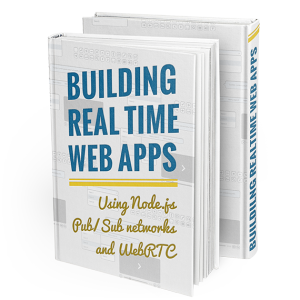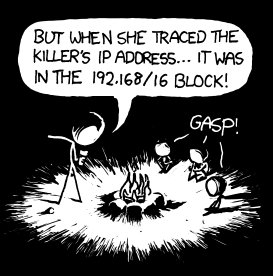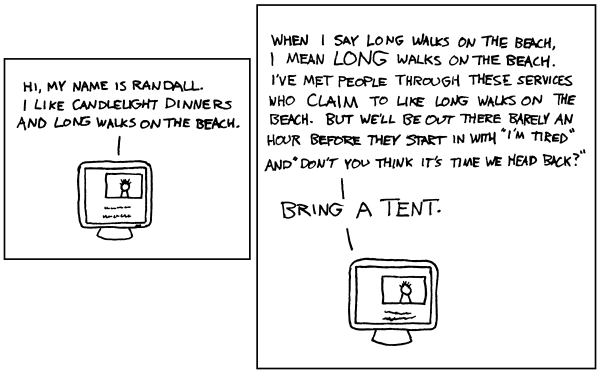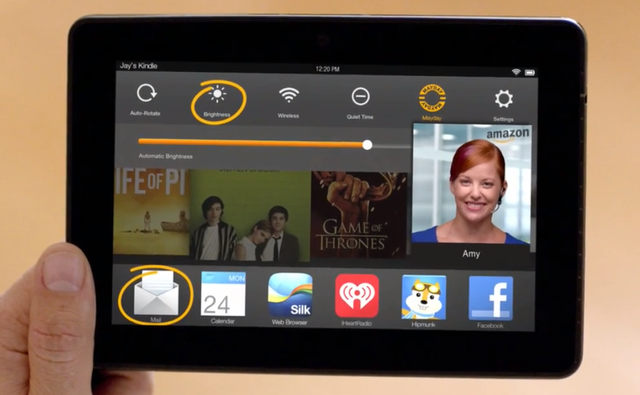Communication has always been about “location”
Just like in real estate, communication is all about “location, location, location.” It’s always been that way, but it’s getting turned around.
The first communication tool was the campfire. No, not that campfire, I mean the older one, from before the internet. You know, the one that hurts your hands when you touch it?
At the end of the day, our hunter gatherer ancestors went to the location of the campfire to relate their stories of the day. Communication among a group was only possible by going to a particular location.
A long time later, along came couriers, the postal service, the telegraph and then the telephone. With each advance, it was easier to communicate without being in the same physical location, but it was still necessary that both parties be in a fixed and known location to reach each other.
A shorter time after that, along comes the internet, email, and cell phones. We can even lump skype or google hangouts into this category. The two people communicating no longer need to be in the same location, or know what geographic location the other party is in. But they still need to know how to reach a specific person. You have to know their cell phone number, their skype username, or their email address. If you are trying to reach out to someone you don’t know yet, then you have to find this information first. That identifying information and the tool you choose to communicate with becomes the “location” where your conversation is based.
In-Context Communication changes the concept of location … again
Am I overstating things if I call in-context communication the next great advance? Possibly, but hear me out.
Already we are starting to see the concept of “location” turned on its head in communication. Technologies like WebRTC are enabling this, because it allows you to easily integrate peer-to-peer encrypted transmission of video, audio, and data between two browsers. Ten years from now WebRTC may or may not be the de facto standard for such communication, but I am convinced that the larger concept of in-context communication is revolutionary.
I’ve seen speculation about dating websites using WebRTC to allow for “anonymous” video chat with prospective dates before you exchange any identifying information, and some dating sites starting to use WebRTC. Perhaps contrary to what we tell our kids, does this make the internet a safer place to meet strangers? You get to see your prospective date, and talk with him or her for a while. You can get over the uncomfortable initial conversations, and see if there is potential. This is before you ever exchange your full names, phone numbers, addresses, or anything else. If there’s no “spark”, either person can end the call and not have to worry “Is he still going to call? Doesn’t he get the message?”
I haven’t been on the dating scene in a very long time thankfully, but that seems like a pretty big revolution in communication to me, especially when you hear statistics about how many people these days first meet their future spouse online.
Customer service is another huge area for in-context communications. If you sell absolutely anything online, then you should consider this in your business model. Looking for expert advice when comparing those two laptops on BestBuy.com? How about starting a video chat immediately with a GeekSquad agent? You could share your desktop with them and show them exactly what models and pricing you are looking at.
Having trouble completing a transaction in your online banking account? There’s no more endless chain of people asking for your name and account number before redirecting you to another agent in another division who also asks for your name and number. When you hit “call support”, your banking site already knows who you are, and what action you just tried to perform, and so it immediately routes you to a customer service specialist for that area.
Amazon is leading the charge for this with their MayDay customer support on the Kindle, which is widely rumored and partly confirmed to be using at least parts of WebRTC to enable their video chat. Can’t find that book you just downloaded? Hit MayDay and a rep shows up on your kindle who can not only answer your question, but also see the same thing you are seeing on your device, move your cursor or type to help you, or draw on your device to “point” where you should click next.
A recent article on WebRTC World touched on this topic when the author talked about a potential “click to call” feature on Twitter. If I’m advertising a business through sponsored tweets, I want you to do more than just follow me on Twitter. How about having you initiate a phone call with me right from the tweet? I do sponsored tweets for our software development business as well as RealTimeWeekly.com, and I would absolutely use a feature like that. Anything I can do to reduce the friction for you to call me about a potential project is a good thing.
Location is now where ever you are
In all of these examples, the location is defined as where you are on the internet, and what community you are choosing to interact with. In-context communications means that you can have meaningful conversation with experts in your field, with acquaintances and friends and even potential dates, with customer service agents, or many other situations, all without ever picking up the phone. You don’t even need to know their name.
The more things change, the more they stay the same. Communications is still about location, but the context of that location is changing. How will your business model change to meet customers where they are, instead of expecting them to call or email you? However your business model is revolutionized by in-context communications, your technology will also need to be revolutionized. WebRTC is the foundation for that.
 Interested in learning more about Real-Time data and building real-time web applications? Then you’ll be interested in our free weekly newsletter Real Time Weekly, which provides a round up of the best news about real time web application technologies. You should also check out our book for building Real-Time Web Applications. And you can always contact us to learn more about how we can help your team build real-time applications!
Interested in learning more about Real-Time data and building real-time web applications? Then you’ll be interested in our free weekly newsletter Real Time Weekly, which provides a round up of the best news about real time web application technologies. You should also check out our book for building Real-Time Web Applications. And you can always contact us to learn more about how we can help your team build real-time applications!














